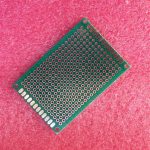Choose the Right PCB Box Build Service Provider
The first and most important step is to carefully evaluate and select a PCB box build assembly service with the capabilities, experience, and quality standards to meet your needs. Look for an electronics manufacturing services (EMS) provider that offers:
- State-of-the-art facilities and equipment for PCB assembly, box build, and testing
- Robust quality management systems and certifications (e.g. ISO 9001, IPC, UL, etc.)
- Experienced engineers and technicians trained in PCB design, assembly, and troubleshooting
- Flexibility to handle low to high volume production and accommodate design changes
- Comprehensive support including DFM review, BOM optimization, and supply chain management
- Strong track record of successful projects and satisfied customers in your industry
Take the time to assess multiple vendors, request quotes, tour facilities, and speak with references before making a decision. The right PCB box build assembler will serve as a trusted partner to optimize your product design and manufacturing.
Provide Complete and Accurate Documentation
For your PCB box build assembly project to go smoothly, it’s essential that you provide complete, accurate, and up-to-date documentation to your service provider, including:
| Document | Description |
|---|---|
| Bill of Materials (BOM) | Complete list of all components, part numbers, quantities, and specifications |
| Gerber Files | PCB fabrication drawings and CAD files defining copper layers, solder mask, legend, and drill holes |
| Schematics | Circuit diagrams showing electrical connections and components |
| Assembly Drawings | Mechanical drawings with dimensions, views, and assembly instructions |
| Test Specifications | Requirements and procedures for quality inspection and functional testing |
Providing detailed, organized, and consistent documentation helps your assembler to fully understand your design intent, catch any potential issues early, and ensure a smooth manufacturing process. Be sure to also communicate any special requirements, standards, or certifications that apply to your product or industry.
Design for Manufacturability and Assembly
To avoid delays and quality issues during the PCB box build process, follow design for manufacturability (DFM) and design for assembly (DFA) best practices, such as:
- Use standard component packages and avoid tight pitch spacing for easier assembly
- Provide adequate PCB real estate and trace spacing for placement and routing
- Minimize use of through-hole components and hand soldering
- Use surface mount devices (SMDs) in standard sizes (0402, 0603, 0805, etc.)
- Orient connectors and components for easy access and assembly
- Panelize PCBs efficiently for automated assembly and depaneling
- Define clear test points and labels for inspection and troubleshooting
Have your PCB design reviewed by your box build assembler early in the process. They can analyze your design, identify potential issues, and provide recommendations to optimize manufacturability, quality, and cost.

Plan for Effective Supply Chain Management
Your PCB box build is only as good as the sum of its parts. Be proactive in managing the supply chain to ensure all components are available on-time and within spec to avoid delays or quality issues. Strategies include:
- Select components with good availability and long-term supply to avoid obsolescence
- Provide alternate part options and broaden approved vendor lists to mitigate shortages
- Order components well in advance and maintain safety stock for critical long-lead parts
- Work with your PCB assembler for volume buys, vendor negotiations, and inventory management
- Monitor component markets and product roadmaps to anticipate any supply chain risks
Effective supply chain management is key to meeting your production schedule and budget. An experienced PCB box build service provider will have established component supplier relationships and procurement expertise to optimize your bill of materials.
Establish Clear Quality Standards and Test Procedures
To ensure your PCB box build meets your performance and reliability requirements, establish clear quality standards and test procedures upfront and verify your assembler’s capabilities to meet them. This includes:
- Defining workmanship and inspection criteria per industry standards (IPC-A-610, J-STD-001, etc.)
- Specifying any environmental or reliability test requirements (temperature cycling, vibration, humidity, etc.)
- Providing detailed functional test procedures and acceptance criteria
- Auditing your assembler’s quality management system and certifications
- Reviewing first article inspection and production yield reports
Work closely with your PCB box build partner to develop an inspection and test plan to ensure quality and catch any defects early. Many issues can be prevented by controlling the process inputs and adhering to proven quality standards.
Allow Sufficient Time for Prototyping and Testing
Before committing to full production, allow sufficient time for prototyping and testing to validate your PCB box build design and process. Prototyping allows you to:
- Verify form, fit and function of your assembled product
- Conduct any required compliance and reliability testing
- Evaluate design changes and component substitutions
- Optimize manufacturing processes and refine cost estimates
- Get early customer or market feedback on your product
Be sure to provide your box build assembler with sufficient lead time and quantities to build and thoroughly test prototypes. Testing should ideally be done both at your assembler’s facility and in your own labs or real-world environment. Any issues or improvements identified during the prototype phase will help ensure a smoother transition to volume production.
Communicate Effectively and Manage Changes
Open and frequent communication with your PCB box build service provider is essential to keeping your project on-track and avoiding misunderstandings. Establish clear points of contact on both teams and agree on communication protocols, including:
- Project kickoff and regular status meetings
- Design reviews and sign-offs on key milestones
- Process for reporting and resolving any issues or discrepancies
- Procedures for managing engineering change orders (ECOs)
- Forecasting and sharing demand and schedule information
Carefully manage any design or production changes to assess impacts on form, fit, function, and supply chain. Your assembler should use a formal ECO process to review, approve, and document any changes to ensure revision control and traceability.
Continuously Improve with Data and Feedback
Finally, work with your PCB box build assembler to collect data and feedback to drive continuous improvement of your product design and manufacturing process. This can include:
- Reviewing production yield, defect pareto, and root cause analysis reports
- Monitoring and grading supplier quality and delivery performance
- Tracking field failures and returns for early warning of any reliability issues
- Soliciting input from your assembler’s engineers and technicians for design and process improvements
- Benchmarking your product against industry cost and performance targets
Use this data to identify opportunities to optimize your design, components, test coverage, and production processes to improve quality, efficiency, and customer satisfaction over time. An experienced PCB box build service provider will serve as a proactive partner to help you analyze metrics and implement improvements.
Frequently Asked Questions
What is PCB box build assembly?
PCB box build assembly involves integrating populated printed circuit board assemblies into a fully functional unit or product, including all wiring, hardware, enclosures, labeling, and packaging. This allows OEMs to outsource complete product assembly to an electronics manufacturing services provider.
What are the benefits of outsourcing PCB box build?
Outsourcing PCB box build assembly allows you to leverage an EMS provider’s specialized capabilities, capacity, and expertise to improve product quality, accelerate time-to-market, and reduce total costs. This allows your team to focus on core competencies like product development and marketing.
How do I choose the right PCB box build assembly partner?
Look for a PCB box build service provider with the right mix of capabilities, experience, quality certifications, and flexibility to meet your technical and business needs. Evaluate multiple vendors and ask for references to find a trusted partner that can support you from design through production and continuous improvement.
What information do I need to provide for PCB box build?
To ensure a successful PCB box build, provide your assembler with complete and accurate documentation, including the bill of materials, Gerber files, schematics, assembly drawings, and test specifications. Also communicate any special requirements, standards, or certifications that apply to your product or industry.
How can I ensure quality and reliability for my PCB box build?
To ensure quality and reliability, follow DFM and DFA guidelines, establish clear quality standards and test procedures, and carefully manage your supply chain. Work with your assembler to develop an inspection and test plan, conduct thorough prototyping, and monitor production and field data for continuous improvement opportunities.
By following these tips and partnering with an experienced PCB box build assembly service provider, you can optimize your electronics manufacturing process to deliver high-quality, reliable products to your customers efficiently and cost-effectively.






Leave a Reply